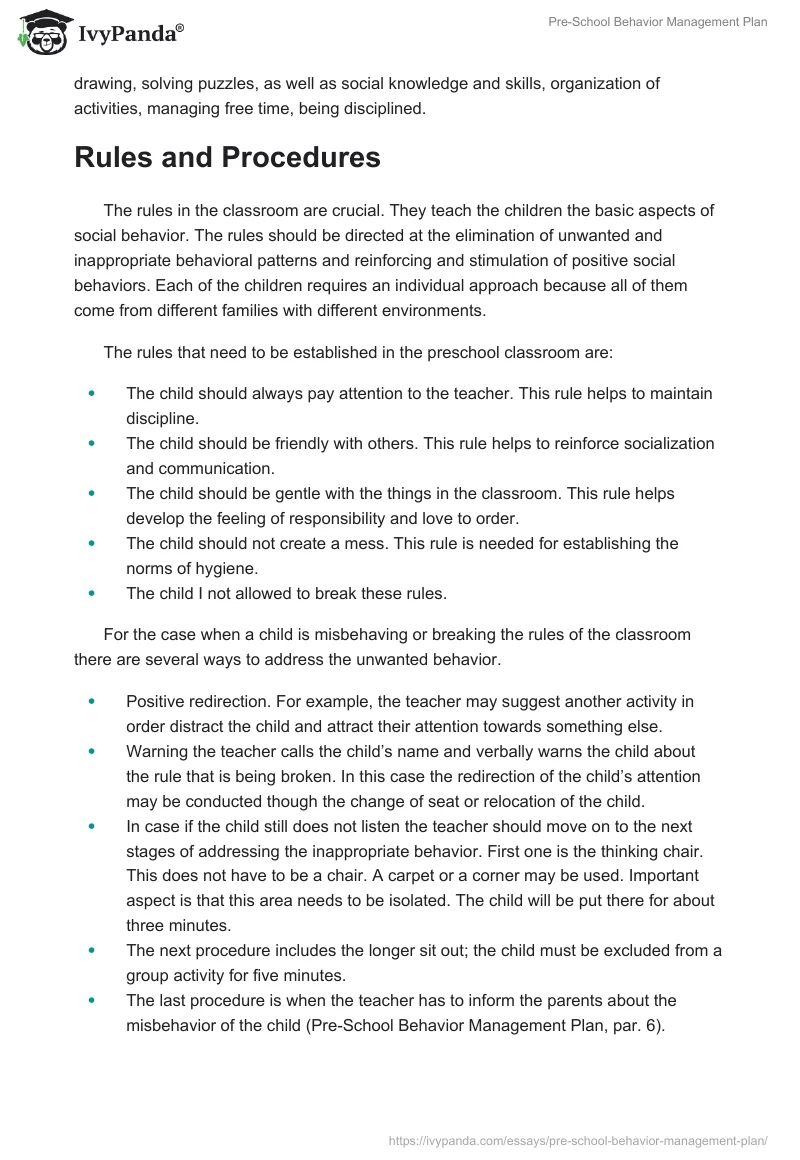Physical Needs
The children between three and four years old are very active and have plenty of energy. They need frequent changes of activities. The teacher who is determined to maintain good discipline during every occupation will have to plan a day filled with many different occupations in order to always have the maximum of children’s attention, interest, and devotion.
Besides, children of this age require the development of motility skills, which is why occupations like figure cutting, drawing, and puzzles must be included. Moreover, the teacher has to remember about the bathroom breaks and organize them evenly throughout the day. Hygiene is another crucial subject. Hand washing has to be done several times a day, before meals, after activities where children may get dirty, and after coming back to the classroom from outside game time.
Emotional Needs
The energetic three and four year olds need their time to get excited, yell and run around. Unspent energy and emotions may result as anxieties, lack of concentration and even aggression. The teacher, who wants to have an organized group of children, will be determined to allow them to spend their physical, mental and emotional energy productively and positively. This is the best way to minimize tantrums and fighting.
Academic Needs
Learning is an important part of every day at the preschool. This is why all of the activities have to be directed at the achievement and perfecting of certain types of skills and knowledge. The child’s brain is very active and it needs to be taught. The good teacher has to always remember about consistency (Stewart, par. 18). The children require to be organized. The tasks and activities need to be scheduled equally and logically through the day. The occupations need to have a clear order. The children have to receive academic knowledge in the basic fields such as crafts, science, reading, drawing, solving puzzles, as well as social knowledge and skills, organization of activities, managing free time, being disciplined.
Rules and Procedures
The rules in the classroom are crucial. They teach the children the basic aspects of social behavior. The rules should be directed at the elimination of unwanted and inappropriate behavioral patterns and reinforcing and stimulation of positive social behaviors. Each of the children requires an individual approach because all of them come from different families with different environments.
The rules that need to be established in the preschool classroom are:
- The child should always pay attention to the teacher. This rule helps to maintain discipline.
- The child should be friendly with others. This rule helps to reinforce socialization and communication.
- The child should be gentle with the things in the classroom. This rule helps develop the feeling of responsibility and love to order.
- The child should not create a mess. This rule is needed for establishing the norms of hygiene.
- The child I not allowed to break these rules.
For the case when a child is misbehaving or breaking the rules of the classroom there are several ways to address the unwanted behavior.
- Positive redirection. For example, the teacher may suggest another activity in order distract the child and attract their attention towards something else.
- Warning the teacher calls the child’s name and verbally warns the child about the rule that is being broken. In this case the redirection of the child’s attention may be conducted though the change of seat or relocation of the child.
- In case if the child still does not listen the teacher should move on to the next stages of addressing the inappropriate behavior. First one is the thinking chair. This does not have to be a chair. A carpet or a corner may be used. Important aspect is that this area needs to be isolated. The child will be put there for about three minutes.
- The next procedure includes the longer sit out; the child must be excluded from a group activity for five minutes.
- The last procedure is when the teacher has to inform the parents about the misbehavior of the child (Pre-School Behavior Management Plan, par. 6).
Daily Scedules
Full Day
- 7:30 – 9:00 Arrival. Free play time.
- 9:00-9:30 Bathroom break. Breakfast time.
- 9:30-10:00 Circle time. Group activity directed by the teacher.
- 10:00-11.20 Learning time – writing, math, art.
- 11:20-11:35 Clean up time.
- 11:35-12:20 Outdoor games/Indoor free play time.
- 12:20-12:25 Washing hands.
- 12:25-13:45 Lunch time
- 13:45-14:00 Story time.
- 14:00-15:20 Nap time
- 15:20-15:45 Circle time. Story time
- 15:45-16:10 Bathroom break. Snack time.
- 16:10-17:00 Outdoor play or indoor free play. Parent pick up.
Half Day
- 7:30-8:00 Arrival. Free play time.
- 8:00-8:30 Breakfast time
- 8:30-9:00 Circle time. Group game directed by the teacher.
- 9:00-9:30 Small group games. The children are divided into small groups for activities like puzzles or cutting.
- 9:30-10:20 Outside play.
- 10:20-10:30 Bathroom break and hand washing.
- 10:30-11:00 Lunch time.
- 11.00-11.20 Story time.
- 11.20-12.50 Nap time.
- 12:50-13:00 Bathroom break.
- 13:00-13:40 Outside time or indoor free play.
- 13:40-14:00 Snack time
- 14:00-14:30 Wash up time. Bathroom time. Parent pick up.
Consequences
The application of these rules and schedules is expected to lead to the better discipline. These measures are designed to keep the children occupied and interested. The schedule is formed to interchange the levels of activities so that different skills are developed through the day and the children are busy and entertained.
In the cases of infractions the teacher will warn the children verbally, and then use more significant measures.
- Positive redirection.
- Relocation of the child.
- Green card, which means that the infraction is serious.
- Yellow card that stands for severe misbehavior.
- Red card that shows extreme misbehavior and results as a conversation with parents.
Works Cited
Pre-School Behavior Management Plan. Humboldt USD. n. d. Web.
Stewart, Deborah. Classroom Management on the First Day of School. 2013. Web.


